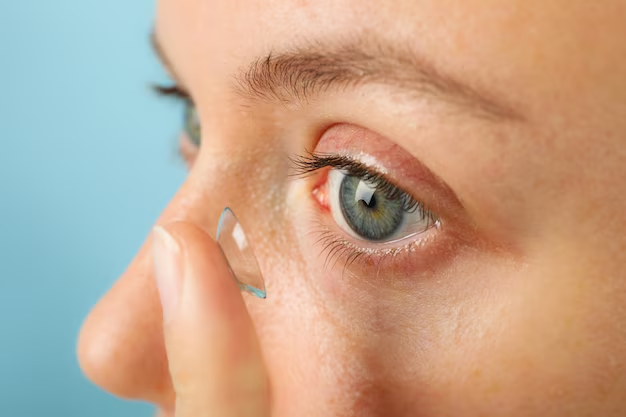Maintaining Your Vision: Do New Lenses After Cataract Surgery Require Special Care?
For many people, cataract surgery opens the door to clearer vision and a brighter outlook on life. With this procedure comes the placement of new lenses, technically known as intraocular lenses (IOLs), which replace the clouded natural lenses. But after these lenses are implanted, a common question arises: Do these new lenses require special care? Let’s delve into this topic to provide you with a complete understanding of post-surgery care and what it entails.
The Basics of Cataract Surgery and Intraocular Lenses
Cataract surgery is a common and generally safe procedure aimed at resolving the issue of cloudy vision caused by cataracts. During the surgery, the cloudy natural lens is removed and replaced with an artificial lens. These lenses are designed to last a lifetime and restore clarity. There are several types of IOLs available, each with different benefits:
- Monofocal IOLs: Provide clear vision at a single distance.
- Multifocal IOLs: Allow for better vision at multiple distances, potentially reducing the need for glasses.
- Toric IOLs: Specifically designed to correct astigmatism.
While these lenses are durable and typically require no maintenance, understanding their care is vital to ensuring successful long-term results.
Initial Post-Surgery Care: The First Few Weeks
The Immediate Aftermath
After cataract surgery, your eye requires time to heal. During the first few weeks, you may need to follow certain precautions to support this recovery process:
- Avoiding strenuous activities that could stress the eye.
- Wearing protective eyewear to shield your eyes from dust and debris.
- Administering prescribed eye drops to prevent infection and reduce inflammation.
Remember: Always follow your doctor's specific instructions during this critical healing phase.
Expected Changes in Vision
Post-surgery, many people experience significant improvements in vision clarity. However, it’s common to notice:
- Mild discomfort or itchiness, which usually subsides within a few days.
- Sensitivity to light, often alleviated with sunglasses.
These are typical responses as your eyes adjust to the new lenses and laser procedure.
Long-term Care: Ensuring Lasting Vision Quality
Routine Eye Exams
Even after your eyes have healed, routine eye exams remain important. Regular check-ups can help in:
- Monitoring the condition of your eyes.
- Detecting any potential long-term complications early, such as posterior capsule opacification (PCO), which occasionally occurs after lens implantation.
Adopting a Healthy Lifestyle
Though the lenses themselves require no maintenance, adopting a lifestyle that supports overall eye health contributes to sustained vision quality:
- Healthy diet: Incorporate foods rich in antioxidants and omega-3 fatty acids.
- Regular exercise: Promote good circulation, benefiting your eyes.
- Adequate hydration: Keeps your tissues and vision sharp.
Protection Against UV Light
Your new lenses may have UV protection, but it's important to continue protecting your eyes from harsh sunlight. Consider the following tips:
- Wear sunglasses with 100% UV protection.
- Use hats with wide brims for added shade.
Managing Eye Strain
In today’s digital age, managing screen time and taking regular breaks from digital devices help reduce eye strain and maintain comfort.
Addressing Common Concerns and Questions
Can I Use Eye Drops?
While your doctor may prescribe eye drops post-surgery, using over-the-counter options should be discussed during your follow-up appointments. Some drops can be harsh; therefore, using safe, prescribed alternatives can be more beneficial.
Is It Normal to Feel Uneasy About My Vision?
Experiencing fluctuations in vision clarity after surgery is not uncommon. If strange symptoms persist, or if considerable discomfort and visual disturbances occur, seeking medical attention to rule out complications is always advisable.
Are There Any Restrictions on Activities?
Once your initial healing period has passed, you generally can resume most of your usual activities. However, it’s wise to avoid activities that present a risk of eye injury without protective measures.
Practical Tips for Post-Surgery Success
Here’s a handy summary to keep your recovery on track:
- 🕶️ Protect Your Eyes: Use UV-blocking sunglasses outdoors.
- 💧 Mind the Drops: Follow your eye drop regimen as prescribed.
- 💪 Healthy Habits: Maintain an eye-friendly diet and lifestyle.
- 🏥 Attend Check-ups: Follow up with routine eye exams.
- Pause Screen Time: Take regular breaks to rest your eyes from digital screens.
What If Something Changes?
It’s natural to have more questions or develop concerns. Always trust your instincts and seek guidance from your healthcare provider if something changes in how your eyes feel or function.
A Visually Refined Future
Navigating the aftermath of cataract surgery involves understanding what’s necessary to protect your vision. Fortunately, the new lenses require minimal direct care, allowing you to focus on lifestyle choices that support your continued eye health.
By maintaining good habits and paying attention to your eyes, you can enjoy the benefits of cataract surgery well into the future. Remember, investing in your eye health today pays dividends with clearer, worry-free vision tomorrow. Enjoy the vibrant world your new lenses help you see with confidence and clarity!
